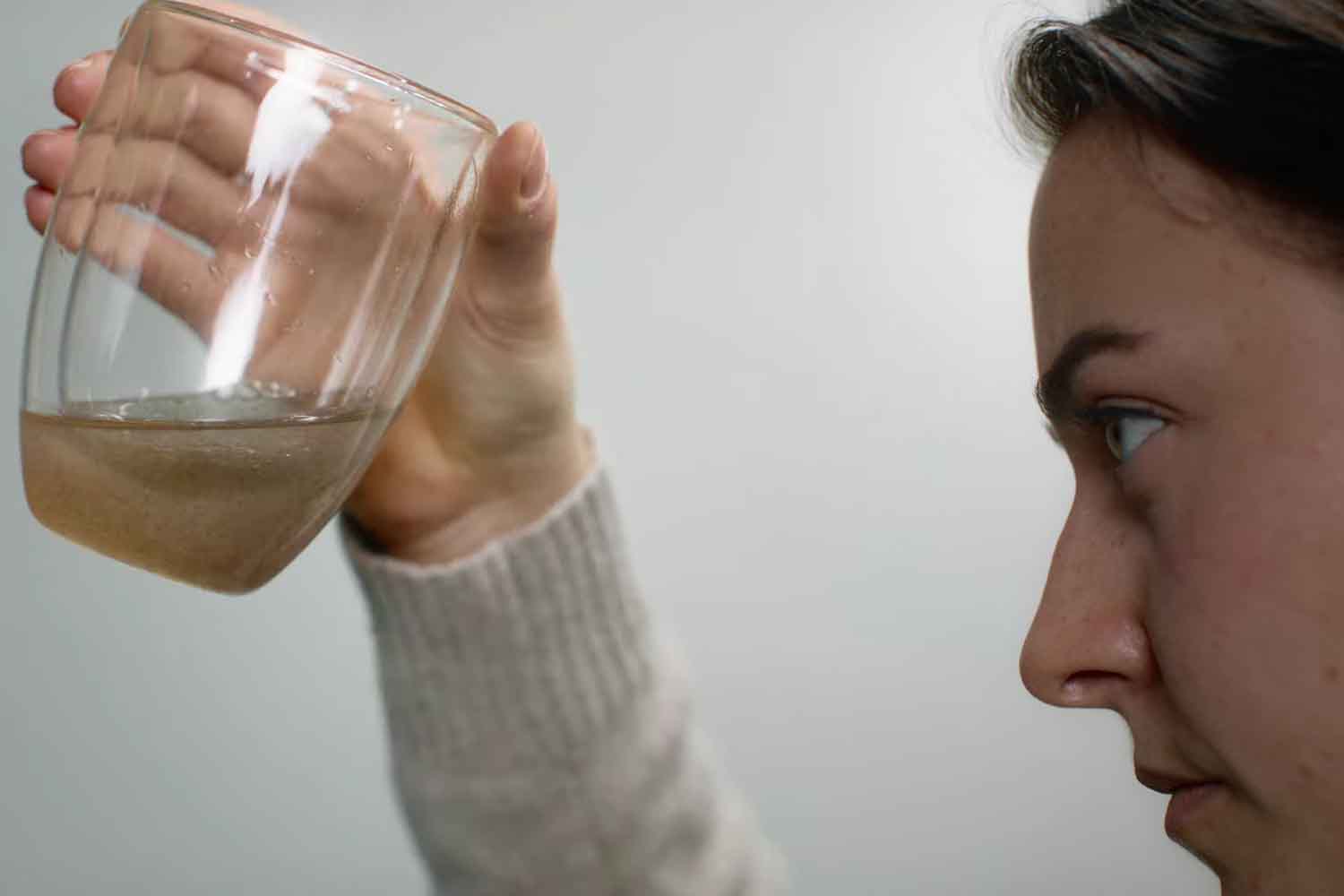A glass filled with dirty water shocked world leaders at the G7. It’s not art—it’s a call to action about water injustice and the 2.2 billion people without clean drinking water.

YouTube – @OnedropOrganization
At first glance, it seems like just a glass—ordinary, maybe even elegant. But take a closer look, and it becomes painfully clear that this object isn’t meant to go unnoticed. The Unfair Glass—as it’s starkly called—is a simple drinking glass with a dual wall, but inside, only part of the space is filled with clean water. A full quarter of the visible interior is filled with murky, polluted liquid. It’s no design flaw. It’s a deliberate, jarring choice meant to provoke discomfort.
That cloudy water represents the harsh reality faced by 2.2 billion people around the world who still lack access to safe drinking water. It’s not just an installation, or a prop. It’s a confrontation.
The project is the result of a collaboration between the One Drop Foundation and VML Canada, and it made its debut at the G7 summit—one of the most high-profile stages on the planet. The goal? To turn a household object into a tool for truth-telling, forcing us to see, quite literally, one of the greatest injustices of our time.
When design makes you uncomfortable
There’s something deeply unsettling about staring into a glass of water and seeing something you wouldn’t dare drink. And that’s precisely the point. The Unfair Glass was made to disturb. It’s designed to interrupt a basic, instinctive action—drinking—with a moment of unease and reflection.
This is no abstract metaphor. This is physical, visual, and immediate.
During the G7, the glass was placed directly in the hands of world leaders. No buffer. No spin. Just the raw symbol of a global emergency that’s too often ignored. It was more than a message; it was a challenge. A provocation.
“Why isn’t this emergency a top global priority yet?”
That’s the question VML Canada’s Chief Creative Officer Graham Lang wants decision-makers to confront. In his own words:
“It’s not a metaphor. It’s real. When they drink from that glass, we want them to feel what people living this injustice feel every single day.”
A campaign that doesn’t stop at symbolism
What sets this campaign apart is its refusal to be just a viral stunt. The Unfair Glass was only the start. It’s the centerpiece of a multi-channel campaign that spans live activations, billboards, and print communication—a strategy crafted to stir public imagination, attract media attention, and most importantly, apply pressure on those with the power to change things.
Because talking isn’t enough anymore. We need investment. We need bold political choices. We need real commitments.
And while many may think of water scarcity as a crisis exclusive to the Global South, the problem is far more insidious. In Canada—where this campaign was born—some Indigenous communities still lack access to clean water. And in Italy? Issues like decaying infrastructure, water poverty, and increasing droughts are becoming disturbingly frequent. This isn’t a distant problem. It’s close. Closer than we care to admit.
To support practical action, One Drop also launched an online fundraiser, aiming to make clean water access a reality everywhere, for everyone.
Design as protest, water as a right
In an era where sustainability messaging is too often diluted by empty slogans and feel-good PR, The Unfair Glass is a breath of something harsher—and therefore more honest. It’s not here to comfort. It’s here to call out. To disrupt. To turn design into protest and a drinking gesture into a political act.
It’s a powerful example of what happens when creativity collides with real-world urgency. In the same spirit, we might recall a stunt by the New Zealand telecom company 2degrees, which encased mobile phones in blocks of ice to highlight the climate crisis. Another bold move. Another sharp jolt.
These are not marketing gimmicks. They are warnings.
Because when the stakes are this high, subtlety doesn’t cut it.water you can’t drink: the most powerful object at the g7
Source: OneDrop
